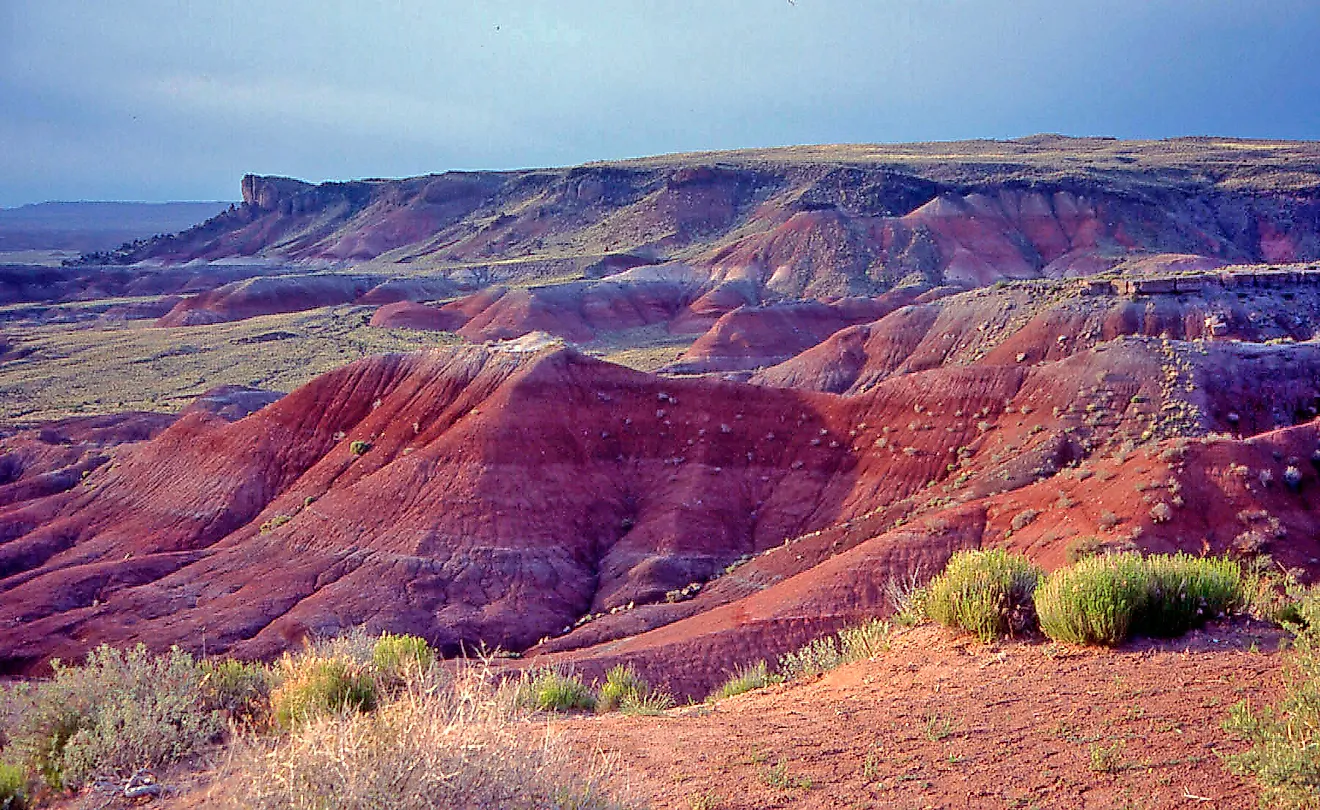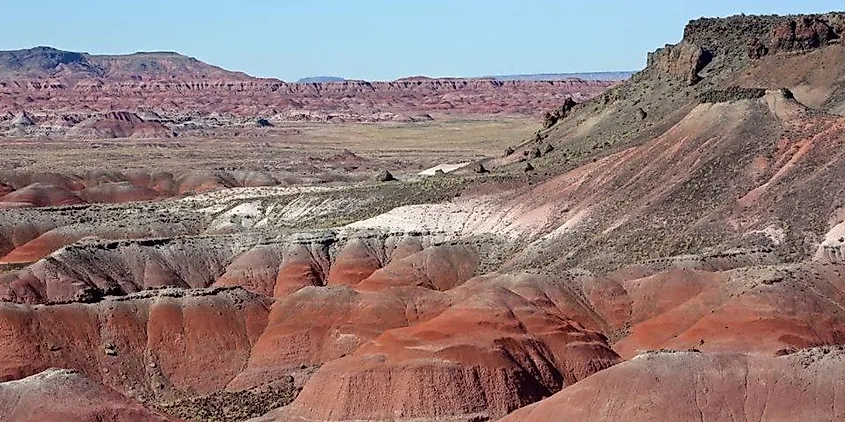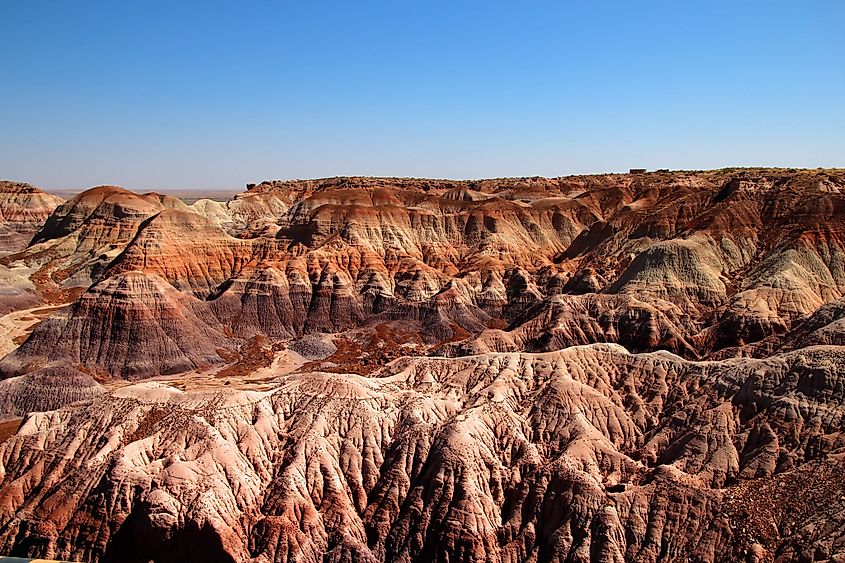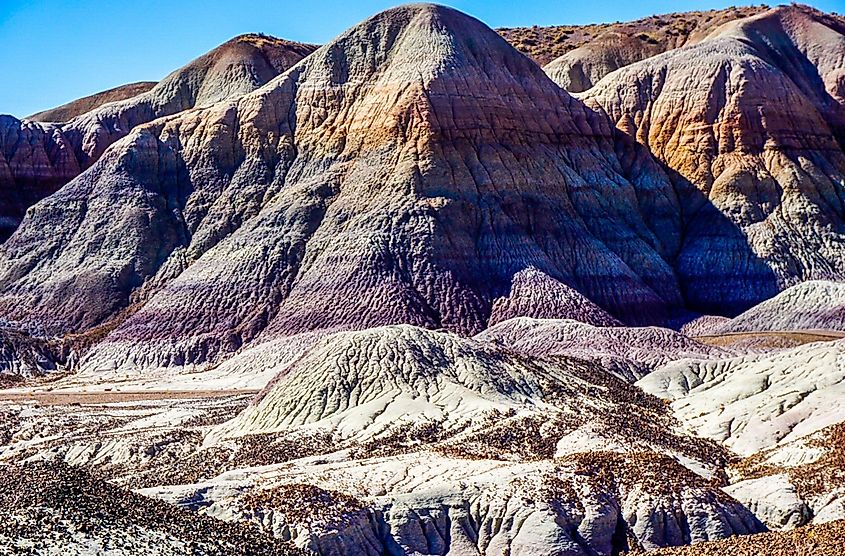Where In The US Is The Painted Desert?

- The unique landscape of the Painted Desert formed over millions of years.
- Exposed deposits of iron, hematite, and aluminum mix with oxygen to create orange, red, and pink colored stone.
- The first Europeans to see the Painted Desert were part of an expedition led by Francisco Vázquez de Coronado.
The aptly named Painted Desert is a stretch of badlands located near the Four Corners area of the United States. Found at the quadripoint intersection of Utah, Colorado, New Mexico, and Arizona, this area of the badlands is known for geologic forms such as steep slopes, deep canyons, tall and flat-topped buttes, and wide mesas. Within the Painted Desert, these unique features are stratified in a rainbow palette of rock formations ranging from pink to orange to violet blue.
One Desert, Two Names

Two explorers, 300 years apart, are credited with providing the Painted Desert with its name. While today it’s easy to find your way to this unique spot, with US Route 66 a popular choice for road trips, in 1540 Spanish conquistador Francisco Vázquez de Coronado is thought to be among the first Europeans in the area. Coronado was searching for the mythical Seven Cities of Gold when his expedition passed through the region. In the chronicle of his journey, he referred to the remarkable spot in Spanish as El Desierto Pintado. Three centuries later, explorer Lt. Joseph C. Ives was an architect and engineer with the United States Army Corps of Topographical Engineers who was sent to survey the newly acquired region. Ives, who would later go on to serve on the construction of the Washington National Monument, first penned the term ‘painted desert’ in English 1858. His description of the unique landscape in Northern Arizona accompanied one of the earliest accurate maps of the Grand Canyon. Today the natural wonder of the Painted Desert welcomes visitors year-round to marvel at its colorful layers set out against the deep blue desert skyline.
Location
Stretching in a crescent-shaped arch all the way from Grand Canyon National Park to the Petrified National Park, the Painted Desert covers more than 93,000 acres. Considered a sacred spot by both the Navajo and Hopi peoples for hundreds of generations, the bow-shaped land formation is about 160 miles long and varies between 10 miles and 35 miles wide. The majority of land found within the Navajo Nation.
A Landscape Like No Other

The vibrant layers of sedimentary rock that make up the Painted Desert result in a landscape that took millions of years to create. In fact, the ribbons of color range from vivid ochre to scarlet to soft rose. The magnificent colors weren’t created from a singular event but rather millions of years of geomorphic changes. Earthquakes, volcanic eruptions, wind erosion, and even torrential flooding have sculpted the stones into unique formations. The brilliant colors are the result of mineral contents slowly layered over millennia into the sedimentary rock. Deposits of iron, hematite, and aluminum cast a reddish hue as they mix with oxygen to create oxides. Catastrophic events like flash floods and landslides have stripped the layers in some areas and created a rapid build-up in others, resulting in the darker purple tones most visible towards the southern end of the Painted Desert. Together this mix of minerals and geomorphic changes has resulted in a painter's palette of banded yellows, whites, reds, and blues within the strata of shale, sandstone, and marls.
The Process Continues

Today the erosion process that created these bright bands of color continues as rain and wind wear away at the rock formations. The arid desert climate, with little vegetation to prevent soil erosion, combined with the seasonal thunderstorms and rainfall from July to September known variously as the North American, New Mexican, and Arizona monsoon, cut deep gullies and hoodoos into the steep-sloped clay and mudstone hills. While the resistant basalt, sandstone, and conglomerate stone erode slower and retain their color longer, softer clay and mudstone grind away quickly, resulting in ever-changing shapes and layers of color.











